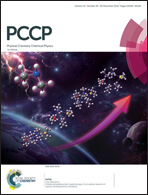A perspective on quantum mechanics and chemical concepts in describing noncovalent interactions
Abstract
Since quantum mechanical calculations do not typically lend themselves to chemical interpretation, analyses of bonding interactions depend largely upon models (the octet rule, resonance theory, charge transfer, etc.). This sometimes leads to a blurring of the distinction between mathematical modelling and physical reality. The issue of polarization vs. charge transfer is an example; energy decomposition analysis is another. The Hellmann–Feynman theorem at least partially bridges the gap between quantum mechanics and conceptual chemistry. It proceeds rigorously from the Schrödinger equation to demonstrating that the forces exerted upon the nuclei in molecules, complexes, etc., are entirely classically coulombic attractions with the electrons and repulsions with the other nuclei. In this paper, we discuss these issues in the context of noncovalent interactions. These can be fully explained in coulombic terms, electrostatics and polarization (which include electronic correlation and dispersion).

- This article is part of the themed collections: PCCP Perspectives and 2018 PCCP HOT Articles


 Please wait while we load your content...
Please wait while we load your content...